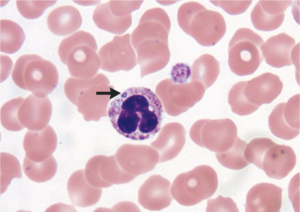
Education about ticks and effective preventative measures is extremely important because a variety of ticks are capable of transmitting very serious illnesses. The following is a review of some of the most common diseases associated with bites from Blacklegged (deer) ticks. Your familiarity with associated symptoms is essential as it may assist with expediting necessary and effective care. Please note, for each of these, any signs of exposure should immediately be followed up on with a medical professional.
Lyme Disease (Borrelia burgdorferi & Borrelia mayonii)

When it comes to tick bites, Lyme disease is the most commonly associated illness. However, people can only be infected through Blacklegged (deer) tick bites and the transmission time is between 18 and 24 hours. Symptoms will typically occur 3-30 days following a tick bite, though not all infected individuals will experience symptoms.
Throughout several weeks after initial transmission, infection will spread to the joints, eyes, heart and nervous system. Lyme disease symptoms often mirror flu and cold symptoms including headache, fatigue, chills, fever and joint/muscle aches. People may also experience nausea, vomiting, changes in vision, tingling and numbness. Approximately 70-80% of people also receive a rash around the site of infection that may resemble a bullseye mark. The rash may also spread to different areas of the body as infection spreads.
Lyme disease causing bacteria can also remain dormant and reemerge weeks, months or possibly years after initial infection. Long term effects include arthritis of the joints, Lyme encephalopathy or nervous system complications.
While clinical signs and a history of exposure are most often relied upon for diagnosis, serological testing (testing serum/fluid for antibodies) consists of a two-part test: EIA – Enzyme Immunoassay; and Immunoblot/Western Blot. Both must be positive for Lyme disease confirmation.
Anaplasmosis (Anaplasma phagocytophilium)

A Blacklegged tick is also capable of transmitting Anaplasmosis, an infection of the white blood cells which triggers an immediate immune response leading to symptoms. The transmission time from bite to infection spans approximately 10 hours, and symptoms can develop within the first 24 hours or within 2 weeks of exposure. Associated symptoms include flu/cold-like effects including fever, chills, fatigue, headaches, muscle pain and nausea. Some people develop rash, and immunocompromised individuals may exhibit more severe symptoms including trouble breathing, kidney failure and neurological issues.
Clinical signs and a history of exposure are most often used for diagnosis, though Anaplasma DNA can be detected in the blood within the first week of infection using Polymerase Chain Reaction (PCR). Low platelet and white blood cell count or elevated liver enzymes may also suggest Anaplasma infection. Finally, a two-part test (Indirect Immunofluorescence Assays (IFA)) is also administered to detect Anaplasmosis. While false positives are common for the first part of the test, the disease can be properly diagnosed if the number of antibodies increases in the second sample.
Babesiosis (Babeisa microti)

Babesiosis is a disease spread by Blacklegged (deer) ticks, which can potentially cause severe and possibly fatal symptoms. Upon infection, Babesia can invade red blood cells and cause them to rupture leading to hemolytic anemia. The transmission from bite to infection spans between 36-48 hours. While some individuals remain asymptomatic, others may experience flu-like symptoms including vomiting, fatigue, chills, fever, sweats and nausea. Others can experience blood clots, difficulty breathing, difficulty walking upstairs, low blood pressure and abnormally low platelets. Finally, immunocompromised individuals, those missing a spleen, and those with preexisting liver or kidney conditions are at a higher risk to experience more severe symptoms.
Clinical signs and a history of exposure are most often used for diagnosis. However, infection may also be indicated by Jaundice (an abnormal increase in liver enzymes), an enlarged spleen, or the presence of hemolytic anemia and Babesia in red blood cells. Antibodies specific to Babesia microti may also be detected using an Indirect fluorescent antibody assay, whereas diagnosis can be confirmed via Polymerase Chain Reaction (PCR) detection of Babesia microti DNA in the blood.
Powassan Virus (Deer Tick virus – Powassan Virus Lineage II)

Powassan Virus is the fastest transmitting disease out of this list. Only 15 minutes separate a Blacklegged tick bite and infection. Research has shown that macrophages and fibroblasts and initially targeted by the virus, and that components of the tick saliva assist in reducing the immune response which in turn assists in the survival and spread of the virus. After passing through the skin and the muscular layers, the virus will enter the blood stream and spread throughout the body leading to symptoms.
While many patients will remain asymptomatic, others often begin experiencing symptoms between 1-4 weeks following initial exposure. The symptoms range from mild to severe and can include fever, headache, vomiting, weakness, seizures, Encephalitis, Meningitis and even death (possible but rare – occurs in approximately 10% of encephalitis cases). Severe symptoms may also lead to hospitalization of an individual requiring respiratory support and medications to reduce brain swelling.
Clinical presentation and risk of exposure are key factors taken into consideration when diagnosing Powassan. Additionally, serologic testing detecting the Powassan specific IgM antibody can be performed, certain characteristics found in cerebrospinal fluid may also be indicative of Powassan virus (abnormal increase in lymphocytes and granulocytes, elevated protein levels with normal glucose levels), as can a brain MRI visualizing multiple tiny strokes throughout the parietal and temporal lobes.
Unfortunately, no vaccines or medications exist for prevention or treatment of Powassan virus infection. Instead, medical professionals will typically treat symptoms to make the patient more comfortable.
Resources:
